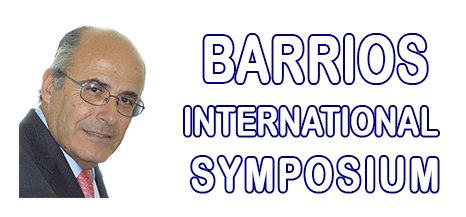ORAL
| SESSION: EnergyMonAM-R2 | Dodds International Symposium on Sustainable Energy Production (4th Intl. Symp. on Sustainable Energy Production: Fossil; Renewables; Nuclear; Waste handling , processing, and storage for all energy production technologies; Energy conservation) |
| Mon Oct, 23 2017 | Room: Peninsula 3 |
| Session Chairs: Wesley Williams; Martin Mansson; Session Monitor: TBA |
15:00: [EnergyMonAM06] Keynote
Reactor Safety for Lead or Lead-Bismuth (LBE) Cooled Reactors-Fuel-Coolant Interactions Teodora
Retegan1 ;
1Chalmers University of Technology, Gothenburg, Sweden;
Paper Id: 86
[Abstract] The most widely used reactor type in the world is the light-water reactor (LWR) where two types are more common: PWR and BWR (pressure and boiling water reactors), along with Canada Deuterium Uranium reactor CANDU, gas-cooled reactors (AGR & Magnox), light water graphite reactor (RBMK & EGP), fast nuclear reactor (FBR) – Russia.
At European level a collaborative effort supported by the European commission and leading European research institutes and industries was started to bring advanced fuel cycles and the P&T strategy together in order to investigate its economic and technical feasibility. The exploratory research done in the field and the launch of the Sustainable Nuclear Energy Technology Platform (SNE-TP) in 2007 lead to a joined effort from the European nuclear fission research community to issue a Strategic Research Agenda (SRA) that describes the roadmap towards sustainable nuclear fission energy. Here, the SNE-TP community identifies the sodium fast reactor technology as the reference but also highlights the need for the development of an alternative track with lead or gas cooling. In addition, the need for R&D activities in support of accelerator driven systems (ADS) was stressed to allow the demonstration of ADS technology by the construction of the first ADS Demo facility (MYRRHA).
With regard to alternative fast reactor technologies as described in the SRA, lead cooled fast reactor (LFR) systems are very promising in meeting the Gen IV requirements in terms of sustainability, economics, safety and reliability and proliferation resistance & physical protection. This assessment is based on inherent properties of the reactor coolant and on design choices made.
Reactor safety with regard to fuel-coolant interactions is an important step in the feasibility and safety assessment of such technologies. Theoretical and empirical approach will be further presented both for lead and lead-bismuth interaction with the nuclear fuel, in this case with UO2 and MOX fuel.
| SESSION: RecyclingWedAM-R4 | 5th Intl. Symp. on Sustainable Materials Recycling Processes and Products |
| Wed Oct, 25 2017 | Room: Peninsula 4 |
| Session Chairs: Teodora Retegan; Christoph Sorger; Session Monitor: TBA |
11:30: [RecyclingWedAM02]
[
Solid and liquid wastes from industrial processes: Innovations in material recovery and environmental protection]
Separation of REEs from Fluorescent Lamp Waste Fractions Teodora
Retegan1 ; Cristian
Tunsu
1 ;
1Chalmers University of Technology, Gothenburg, Sweden;
Paper Id: 69
[Abstract] Separation of REEs from fluorescent lamp waste has been a very successful project financed by Formas and Energimyndigheten between 2010-2014, aimed at recycling of Rare Earth Metals (REMs) from low energy lamps after Hg decontamination step. The project has been carried-out in close collaboration with an industrial partner (Nordic Recycling AB), CIT (Chalmers Industritechnik) and IVL (Swedish Environmental Research Institute).
A hydrometallurgical process was developed, comprising a leaching step for mercury (using iodine solutions) and subsequent selective leaching of remaining components. The hydrometallurgical decontamination process can be viewed as a simpler and possibly cheaper alternative to the energy intensive thermal treatment for reducing mercury levels in heavily contaminated samples. Cyanex 923 in kerosene allows the separation of REEs from other elements, leading to significantly better results compared to other extraction systems e.g. TBP. Separation of a REEs concentrate was achieved using mixer settlers. From here, the stream can be further processed for further separation using e.g. more selective extractants or a larger number of extraction stages. In December 2014, the project has reached the laboratory pilot stage.
Due to the success of the project, the industrial partner together with other 3 SMEs (MEAB, MRT and CIT) and Chalmers group have decided on scaling-up the project and installing a pilot plat at the industrial partner’s site. The whole process makes the subject of this work.







